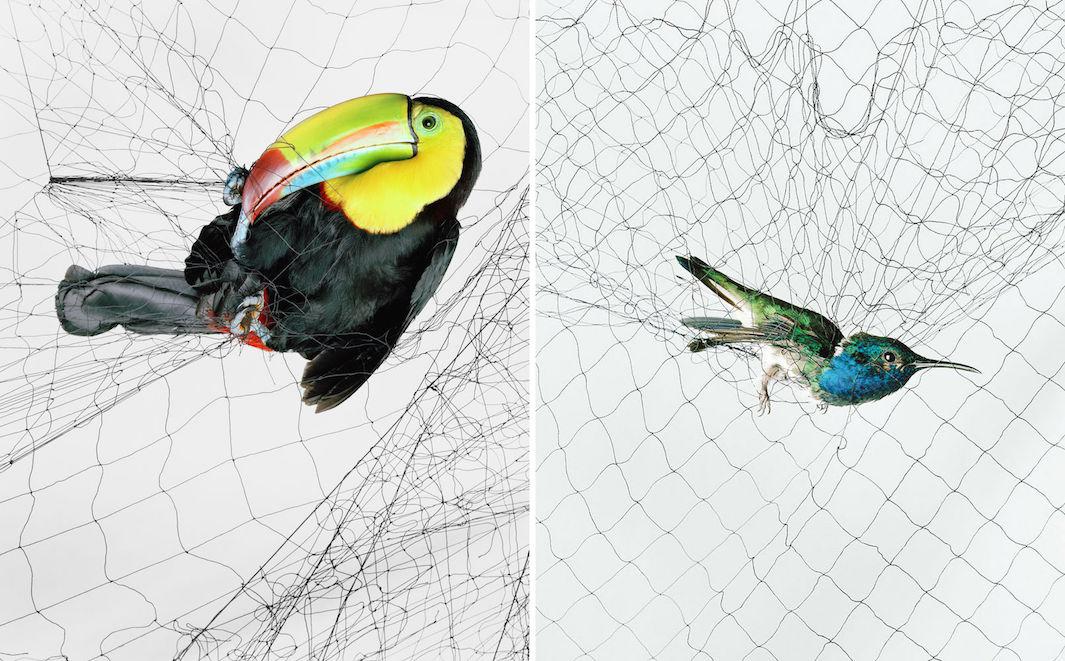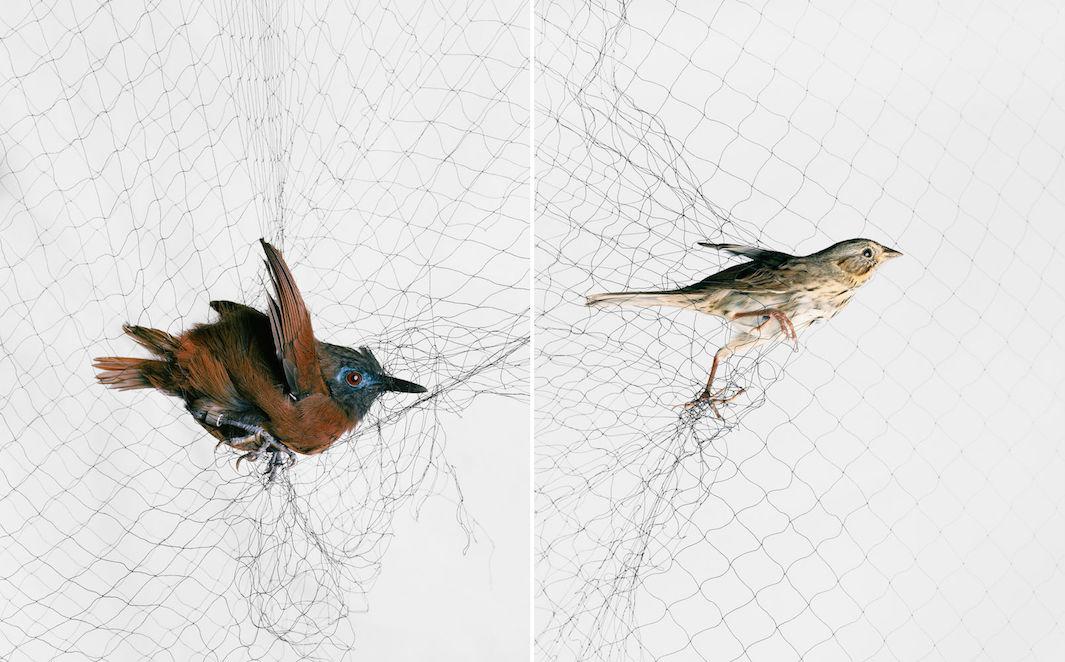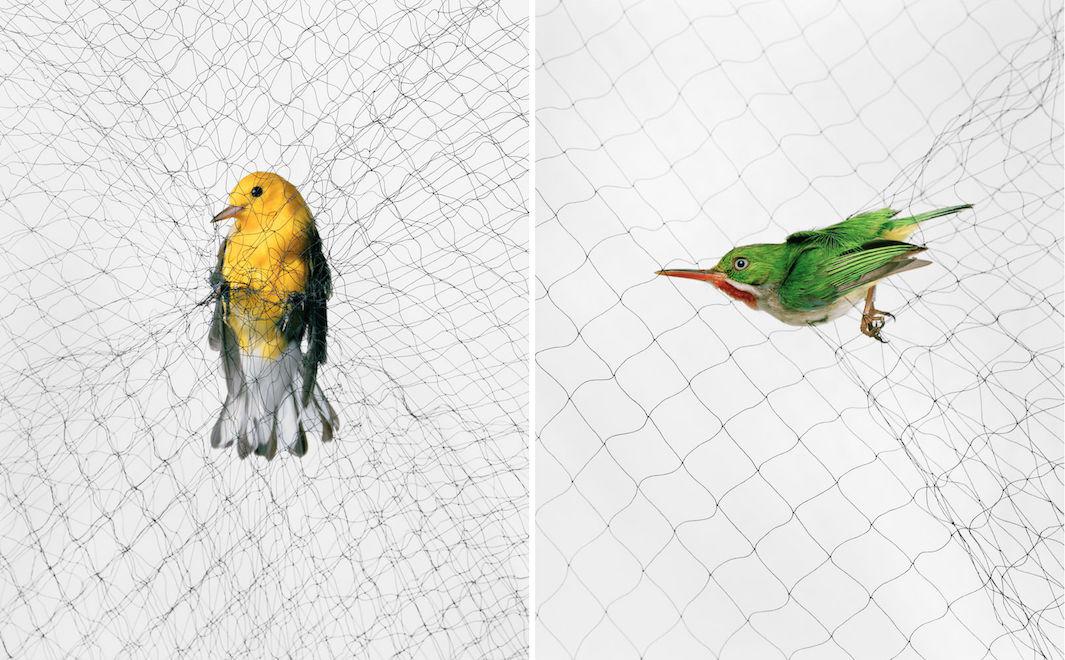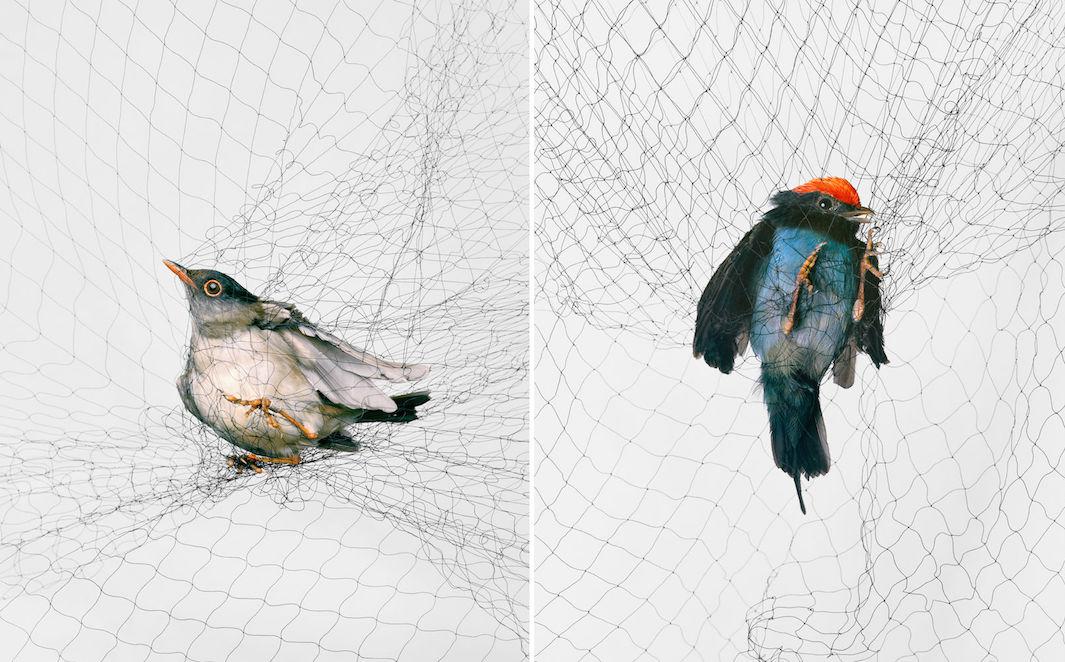The birds Todd R. Forsgren depicts in Ornithological Photographs, which Daylight Books published in October, are in a strange limbo, caught in mist nets and awaiting banding from ornithologists, who can then keep track of them over time.
Between 2006 and 2014, Forsgren photographed about 150 birds in North and Central America against makeshift studios he set up around the birds once they were caught in the net. He wanted the birds isolated from the landscape in order to pay homage to John James Audubon and Roger Tory Peterson, the ornithologist-artists whose work inspired his project.

Copyright Todd R. Forsgren

Copyright Todd R. Forsgren
Forsgren is a lifelong birdwatcher and has worked as an ornithologist’s assistant, but here his focus was more on art than science. After a bird was discovered, Forsgren had to work quickly to find the best angle from which to portray it so the ornithologist he was accompanying could get to the banding as soon as possible.
“Sometimes the birds were sitting in a very bland profile position, like you see in a field guide—sitting there looking straight ahead. Other times I was going for that Audubon dynamic pose where things are twisted and tangled and almost contorted in a way that seems unnatural,” Forsgren said.

Copyright Todd R. Forsgren
When that position is most unnatural, Forsgren’s photos can startle, but he says that’s intentional. He wants the bird’s brief discomfort to spark conversations about the larger issues that threaten their entire species’ survival.
“Oftentimes when people first see the work they have a negative impression. You see a bird trapped and you feel empathy for it,” he said.
“I hope people come to the realization that, yes, this individual bird is going through something for science, but this data is very valuable. I want to match this very apparent individual with these abstract ideas of populations and species, to try to give people a sense of that and challenge their view.”

Copyright Todd R. Forsgren

Copyright Todd R. Forsgren
